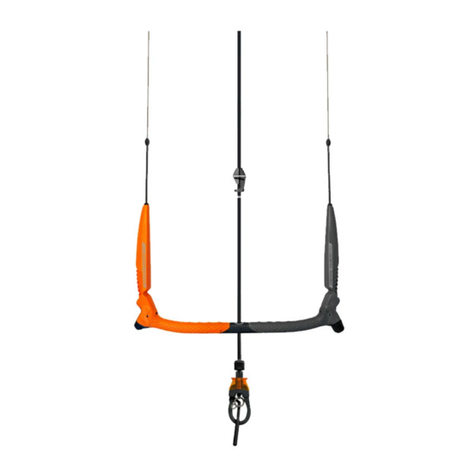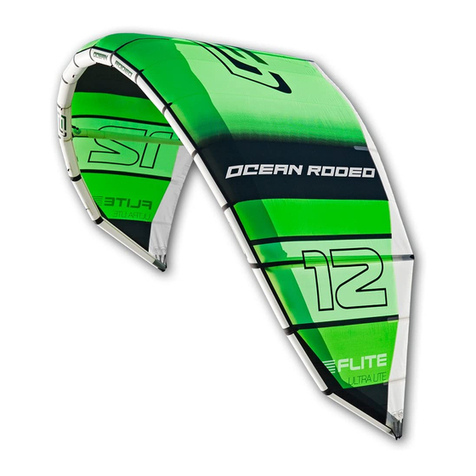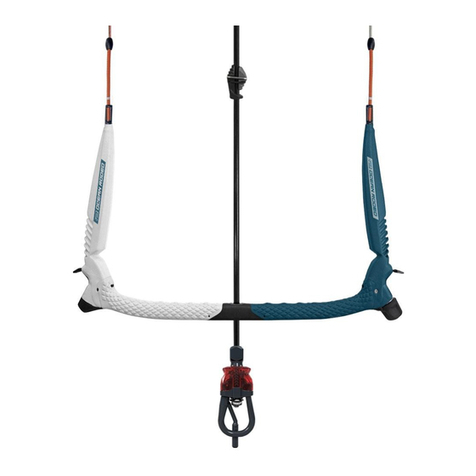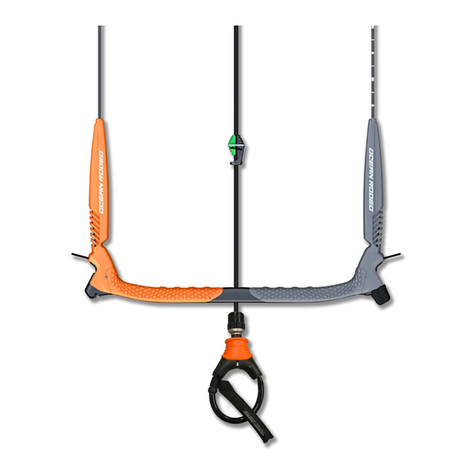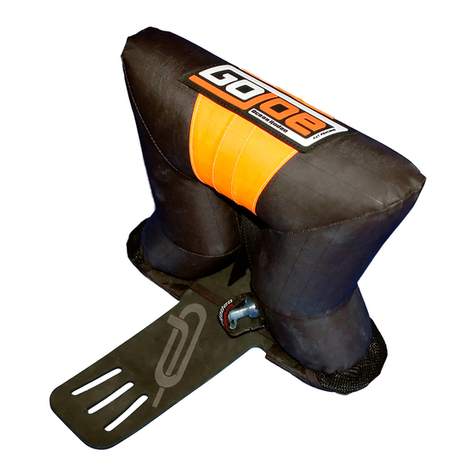
9 10
Kite Manual
Wingtips parallel. Back corners pull inward.
LINE MANAGEMENT
Kite line management is a very personal thing. Stored incorrectly they can cause hours of
frustration in tangles. Attached to the kite incorrectly they can create a dangerous situation
for you and others. Develop a line storage strategy that works for you and do it the same
way every time!
Here’s what works for us:
• Don’t be a kook! Have your kite pumped up and your suit and harness on before laying
out your lines! Be considerate of others and recognize that tangles and confusion can
result from lines left unattended!
• Place the loose end of your lines near the center of the leading edge tube
• Unwind your lines walking upwind
• Identify lines at bar end and work your way down to the kite separating the lines
• Before attaching any lines to the kite physically separate the left front and rear, right
front and rear.
• Liftyourkiteovertheseparatedlines,leavingenoughlinelengthbehindthekitesoyou
do not have to drag the bar to make contact with the pigtails on the kite.
• Whenstoringlinesre-windinafigure8patternaroundthebarendstoavoidtwisting
the line set.
Helpful Tips:
• Put some weight on your bar to stop dragging as you untangle your lines.
• Stand between the front lines and separate the front and back lines between your fingers
• Carefully work your way towards kite. If your lines are severely twisted, work in short
segments starting near the loose end working away from the bar.
• Always remove seaweed from lines as it dries and can cause tangles.
• Be sure there are no knots in your flying lines as they create a weak point!
USING THE CORRECT KITE CONTROL BAR
Safety Warning!
Allpost2018Kitesuseasinglefrontlineflagoutsystem.Itsiscrucialthatthebaryouare
using utilizes this system in order to achieve maximum de-power if the trim loop release is
activated. Using control bars that do not offer single front line flag out (some older Ocean
Rodeo bars or other brands) will not allow the user to access maximum de-power when the
trim loop release is activated and could result in serious injury or death.
Line Lengths And Tuning :
All lines must be of equal length when measured from bar to end of lines with the center
line un-cleated and fully extended. (If using the a back line trim system the bar should be
settofullpower.)Withalllinesequalthekitewillperformwell.
Note:
• Whenwingtipsareparallelyoukitewillflywell.
• If the wingtips angle inwards towards rear of kite, the rear lines are shorter than the front
lines the kite will be prone to stalling! This will look like the 2nd kite pictured on page 9.
Linelengthcanaffectturningandpowerofkite.Optimumlinelengthsare15mto25m.
Shorter lines increase kite turn response but reduce the power window of the kite.
Conversely, longer lines decrease turn response but increase the power window of the kite.
